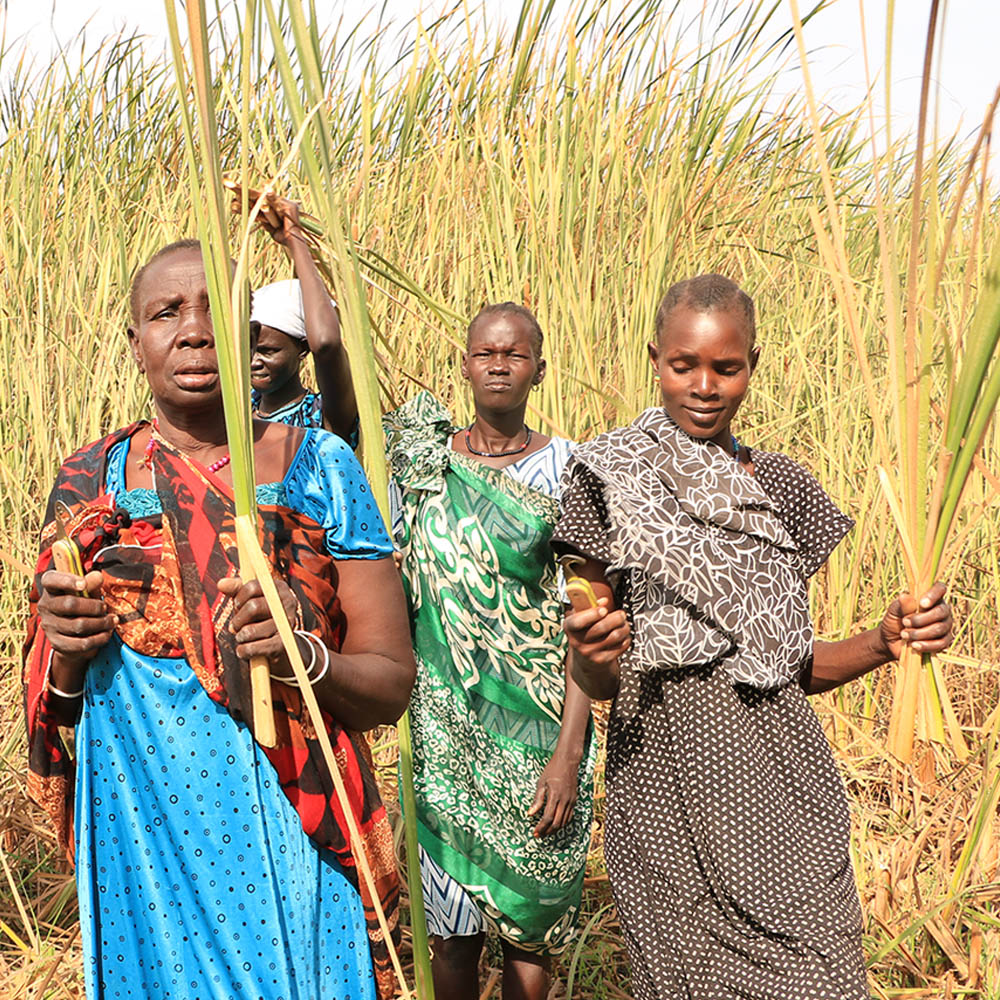

Affected people in areas of conflict need special tools to build and repair shelters by their own hands and with local materials. These tools have to be designed in such a way that, in violent conflicts, they cannot be misused as weapons.
We are a design and research team at the Academy of Art and Design in Basel. In close collaboration with aid organizations, people affected in South Sudan, forensic scientists and other experts we develop a tool which we call SafeTool. It shall be given out on a large scale with other necessary goods in regions of conflict, and it shall relieve the the strain on people in need – especially on women. Thus, people affected receive help in order to help themselves. In addition, the use of plastic tarpaulins is reduced.

WHY SAFE TOOL
The United Nations High Commissariat for Refugees (UNHCR) recommends the use of local materials, skills, and techniques wherever possible. Therefore, constructing traditional shelters with indigenous renewable materials is ideal. In the case of South Sudan, grass needs to be cut and branches have to be sawed.
Aid organizations do not distribute conventional tools like the machete or the sickle since they can easily be used as attacking weapons. And since until now there have been no appropriate tools, mostly plastic tarpaulins have been handed out.
Using the SafeTool for building shelters is sustainable in multiple respects and serves help for self-help:
• Plastic tarpaulins are less strain-resistant and therefore have to be replaced often. The destroyed tarpaulins are waste.
• Natural materials (grasses and woods) insulate better than plastic tarpaulins.
• Traditional methods of construction based on natural resources can be cultivated further and passed on to the younger generations.



SITUATION IN SOUTH SUDAN
Of the 12 million South Sudanese citizens, more than 7 million need help and shelter. 6.3 million people have acutely no nutrition security. 1.9 million were driven out of their shelters, and another 2.4 million refugees are waiting to be able to return. Up to 1.7 million people do not have access to any tools because of flight and plundering. Primarily, women are affected since they are mostly responsible for housekeeping and for building the shelters.
FIELD TESTS IN SOUTH SUDAN
In spring 2018, the second generations of two different prototypes – 30 pieces of each – were tested by groups of women and men as well as by specialists of the humanitarian emergency relief in South Sudan. In parallel with these tests, the tools were evaluated by forensic experts at Bern University in terms of risk potential reduction. In view of the results we will rework the SafeTool and prepare it for production and implementation in South Sudan this year.
COOPERATIONS
Affected people in the area of use participate in the development process as well as emergency relief specialists, forensic scientists, and botanists. We also work with cutlers and industrial partners. We apply the methods of human-centered design which focus on including the most significant stakeholder groups in the realization of sustainable solutions regarding help for self-help.